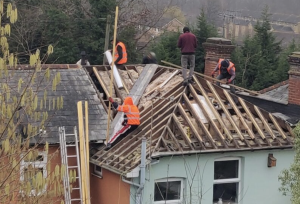Fabricated staircase slipped causing amputation of leg
This post has already been read 1049 times!
A company specialising in the manufacture and installation of industrial staircases has been fined following an incident where a worker became trapped at a site on Fenchurch Avenue in London.
Westminster Magistrates’ Court heard that on 19 July 2018 Dragos Sultana suffered serious injuries when a section of staircase weighing 1.7 tonnes fell and trapped his leg. The staircase was being lifted into position when one of the fabric slings supporting the load failed, causing one side of the staircase to drop and striking Mr Sultana. His injuries resulted in the amputation of his leg just below the groin.

An investigation by the Health and Safety Executive (HSE) found that Leyton Group Construction Ltd failed to properly plan the lifting operation. The lift plan was not specific to the job and the method statement lacked the level of detail required about the load, how it should be slung and how it should be lifted. This resulted in the slings being stretched across the sharp metal edges of the staircase stringers, which caused a shearing action and ultimate failure of one the slings.
Leyton Group Construction Ltd of Swinborne Road, Basildon pleaded guilty to breaching Regulation 8 (1) of the Lifting Operations and Lifting Equipment Regulations 1998 (LOLER) was fined £14,000 and ordered to pay costs of £7,227.14.
Speaking after the hearing, HSE principal inspector Tania van Rixtel said:
“The method employed for lifting the staircase was unsafe. This case highlights the need for duty holders to properly plan all lifting operations before work is carried out to manage the risk of injury to workers. This incident could so easily have been avoided by simply carrying out correct control measures and safe working practices.
“Companies should be aware that HSE will not hesitate to take appropriate enforcement action against those that fall below the required standards.”























